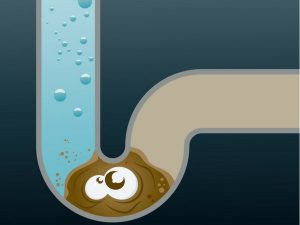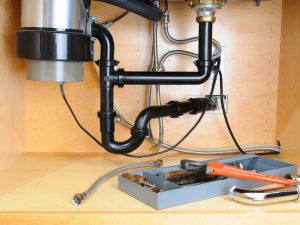Consider These Top 3 Reasons if You Have Stinky Drains and Smelly Water
If you’re constantly dealing with smelly water or dealing with stinky drains, it’s time to find the root of the issue. Your home is meant to be a pleasant, comfortable environment, free of unwanted odor or mess.
There are three main reasons that stinky drains and smelly water develop. Read on to find out exactly how these stinky issues can quickly be detected and solved for good.
1. Problems with your Ventilation
In most homes, there is a ventilation installed that is dedicated to the safe exit of sewer gas, without disturbing the rest of the home with its stinky movement.
By allowing atmospheric pressure in, and the free-flow of air outwards, these gases travel to the outside world. However, these systems might become clogged up.

These clogs are formed of:
- Snow.
- Animal nests.
- Leaves.
- Organic debris.
When you’re dealing with a clog, you should only try to remove it when it is safe and accessible. In most cases, it is recommended to call your local plumbing service to get to the bottom of the issue by utilizing the right tools and knowledge to do so safely.
2. Water Heater Bacteria
Since water heaters are moist, dark areas, bacteria who actively seek out moisture thrive. The bacteria multiply, and grow smelly over time. This smell is increased when the bacteria have access to metal components of the water heater, and sulfur within a water supply.
This unmistakable smell of “rotten eggs” is quickly transported around a home whenever a hot water tap is turned on.
Try cleaning a water heater that is filled with bacteria using H2O2 (hydrogen peroxide). Hydrogen peroxide works to kill the bacteria present in the water heater, without damaging the tank itself. Luckily, H2O2 is also safe for the environment, breaking down into water and oxygen!
3. A Dried-up P-Trap
Most drains that have been well installed in a home will have a u-shaped pipe, also called a p-trap.
The p-trap has a small amount of water that is stored in it, which offsets the entrance of sewer gas.
This seal deters the sewer gas into its ventilation system, where it safely enters the home.

When the p-trap is dry, sewer gas can easily enter your home and spread its foul odor.
For pipes that have not been used for an extended period, let the tap run for a few minutes to fill up the p-trap.
If this was the origin of the issue, then the sewer gas smell should start dissipating in minutes. If the smell was from a drain that is used frequently, the problem might be more critical.
Immediately notify a plumber, and they will inspect the issue to determine whether it is a leak, blockage, or something else.



